It could be argued that Hillman never really demonstrated brilliance, but they did fulfill their design objectives. These sentiments are not ours, but from Car Magazine, who used words very similar to describe the company at the release of Hillman's then new Avenger model in the spring of 1970.
Unique Cars and Parts do, however, agree - and think that the same definition could easily have been applied to the large majority of cars that left the Coventry factory. Well made, reliable and styled to contemporary taste, Hillman vehicles were always worthy in a middle-class sort of way, but to our mind they never achieved that spark of greatness.
William Hillman of Coventry
But the story of Hillman does not start in 1970 - rather in 1907, when news broke that William Hillman of Coventry was about to go into the motor-manufacturing business. Hillman had been one of the pioneers in the cycle industry, starting as a foreman with the Coventry Sewing Machine Company, which began building velocipedes in 1869.
A couple of years later, Hillman joined James Starley, 'father of the cycle industry', building the Ariel bicycle, which was the first to use metal-spoked wheels and a speed gear. Hillman started his own cycle company, Hillman, Herbert and Cooper, in 1876, to make his 'Kangaroo' safety, high-wheeled cycle.
The Merits of Ball Bearings
Hillman was a practical engineer, one of the first, if not the first, to recognise the merits of ball bearings, and he designed and made special automatic machinery for their manufacture. However, it was not Hillman who designed the company's first car. This was the work of a Breton motor engineer, Louis Coatalen, who had originally joined the Crowden Motor Car Company at Leamington Spa in 1900, before moving to Humber.
The first Hillman-Coatalen car was running in May 1907, and a newly built and equipped works at Pinley, Coventry, was setup to manufacture it. The car had a 25 hp 6.4 litre four-cylinder engine, with separately-cast cylinders; the
prototype was entered for the Isle of Man Tourist Trophy in June. Its speed capabilities were demonstrated in the TT, with Coatalen at the wheel, the new car making the fastest time of the day on its first lap, but it retiredon the second lap with a broken.
After the race the car was driven for 15,000 miles to discover any weakness,
but was only modified at the end of the test to give direct drive in top. The car was extremely tractable, the control was perfect and the reserve of power remarkable. A second model, a 40/60 hp, 9.7-liter six with separately cast cylinders was announced at the Olympia Motor Exhibition that November. The price was a modest UK£650 (the four cost £460, both figures being the cost of a chassis only). These two models were the company's sole products until 1909, when the 12/15·hp (actually 19.6hp RAC) appeared, priced at UK£268. It was produced in this form for three years, then continued with an increased stroke until 1913.
Louis Coatalen parted company with Hillman in 1909 joining Sunbeam, where he would produce his finest designs. The cars he had produced for Hillman outlasted' his stay with that company: the original 25/40 hp model was produced until 1913 and the 40/60 until 1911. They probably didn't know it at the time, but these would turn out to be the biggest cars ever to be built by Hillman, who thereafter concentrated on vehicles of a more modest nature.
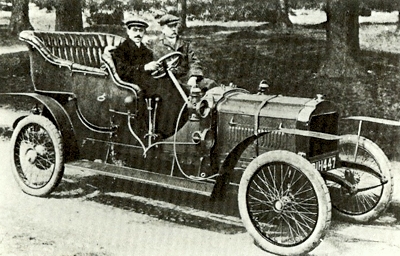 1907 Hillman 25 hp, powered by a four-cylinder engine.
1907 Hillman 25 hp, powered by a four-cylinder engine.
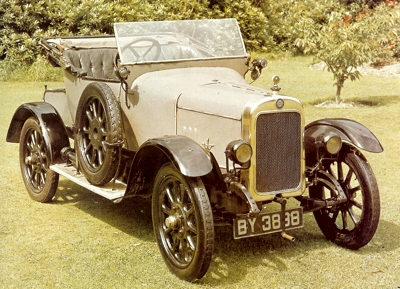 1921 Hillman 2-seater Tourer.
1921 Hillman 2-seater Tourer.
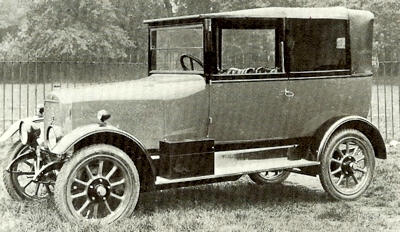 1922 Hillman All-Weather Two-Door, four/five seat saloon.
1922 Hillman All-Weather Two-Door, four/five seat saloon.
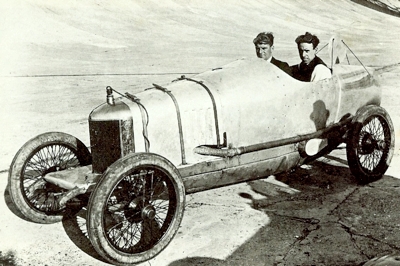 1922 Hillman 1.5 litre Racer pictured at Brooklands.
1922 Hillman 1.5 litre Racer pictured at Brooklands.
 1928 Hillman 14 Tickford Cabriolet - one of many coachwork variations.
1928 Hillman 14 Tickford Cabriolet - one of many coachwork variations.
 1931 Hillman Vortic Saloon.
1931 Hillman Vortic Saloon.
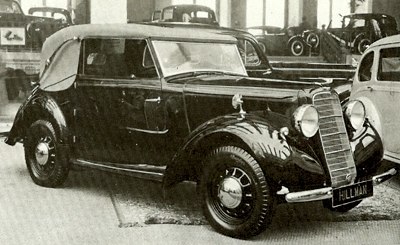 1938 Hillman Minx Cabriolet at Olympia Show.
1938 Hillman Minx Cabriolet at Olympia Show.
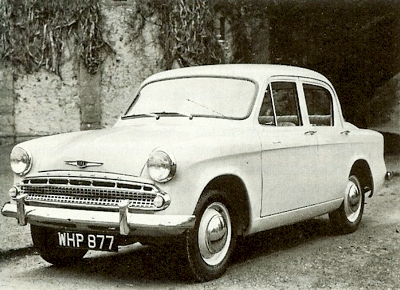 1959 Hillman Minx Special Saloon, which featured a 1494cc 4L engine.
1959 Hillman Minx Special Saloon, which featured a 1494cc 4L engine.
 1960 Hillman Minx Cabriolet.
1960 Hillman Minx Cabriolet.
 1964 Hillman Husky Station Wagon.
1964 Hillman Husky Station Wagon.
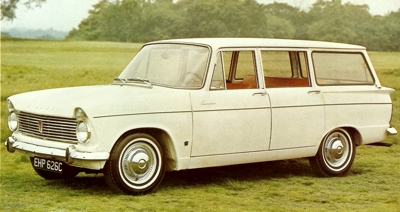 1965 Hillman Super Minx Wagon, which was fitted with a 1725cc engine.
1965 Hillman Super Minx Wagon, which was fitted with a 1725cc engine.
 The Hillman Imp, all things considered it was a pretty good car, but came at a time when the Mini ruled.
The Hillman Imp, all things considered it was a pretty good car, but came at a time when the Mini ruled.
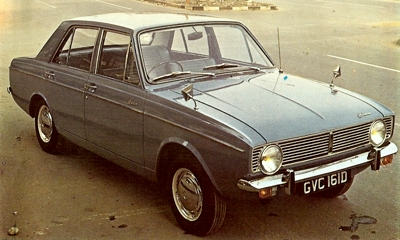 The Hillman Minx Arrow, which shared the same body parts with the Hunter. Don't be too quick to dismiss it though, it took out the London to Sydney marathon.
The Hillman Minx Arrow, which shared the same body parts with the Hunter. Don't be too quick to dismiss it though, it took out the London to Sydney marathon.
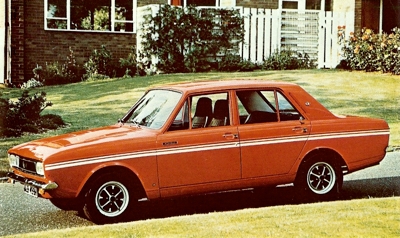 1969 Hillman Hunter GT - we would love to see this matched up against the Cortina GT.
1969 Hillman Hunter GT - we would love to see this matched up against the Cortina GT.
 The faster Holbay tuned GLS Hunter. But it was still not enough to pull a sailor off your sister.
The faster Holbay tuned GLS Hunter. But it was still not enough to pull a sailor off your sister.
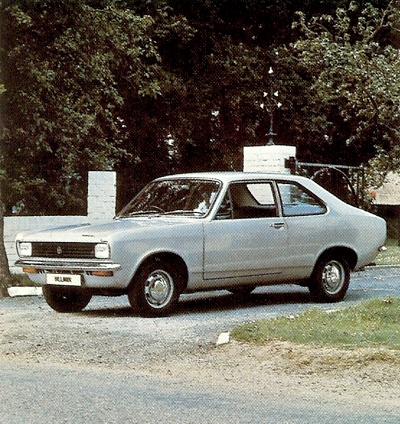 Hillman Avenger Sedan - as the public had come to expect, another Hillman that was "nothing special".
Hillman Avenger Sedan - as the public had come to expect, another Hillman that was "nothing special".
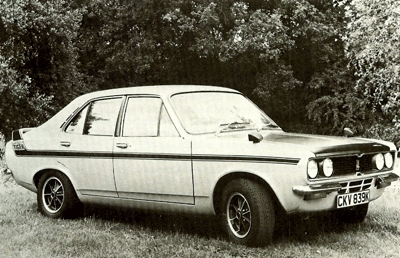 Hillman Avenger Tiger.
Hillman Avenger Tiger.
 1974 Hillman Avenger GT publicity shot. The vinyl roof was a design feature, but looks more like they ran out of money to finish the job. As an exercise in making a 4 year old design look more modern, to our eyes, it failed.
1974 Hillman Avenger GT publicity shot. The vinyl roof was a design feature, but looks more like they ran out of money to finish the job. As an exercise in making a 4 year old design look more modern, to our eyes, it failed.
 1969 Hillman Minx Statin Wagon. Reliability its forte.
1969 Hillman Minx Statin Wagon. Reliability its forte. |
The Hillman Nine
In. 1913 came a twin-cylinder 10 hp model which lasted only a year; the 13/25 hp six of only 2 litres, which appeared in 1914, proved equally transient. Far more successful was the little 1357cc Nine, introduced in 1913, which sold at UK£200 complete. This model uprated to 11.9hp, formed the mainstay of the companies post-armistace production - although inflation had doubles its price.
Most of the cars exhibited in Olympia in 1919 had Vanden-Plas open coachwork but there was also a sports version with Hillman built polished aluminium bodywork, an outside
exhaust pipe and an aggressively V'eed radiator: in the interests of extra performance it made do without an electric starter that had previously become standard equipment on all other Hillman models.
Raymond Mays and Quick Silver
Raymond Mays cut his racing teeth in a Hillman Nine - aptly dubbed "Quick Silver".
These model Hillman's were a common sight at Brooklands in the early 1920's, the best known was probably George Bedford.
In 1921 William Hillman passed away, and by 1923 the Sports Hillman had vanished from the scene. The 11.9 assumed considerable respectability, being by then clad in what the makers claimed to be all weather coupe or 4-seater coachwork, although as rigid sidescreens were used instead of winding windows, they were stretching the elastic terminology of early 1920's coach building considerably.
The Car That Costs Less Than It Should
The next stage in the Hillman saga occurred at the end of 1925, when the long-running 11.9 was replaced by a new 14 hp model, with the same stroke measurement, but with larger bores, advertised as 'The car that costs less than it should'.
As the chassis price was UK£230, and a saloon with square-cut Hillman
bodywork cost only UK£345, the 14 proved a very popular vehicle. By this time, the ambitious Rootes brothers had taken over export sales of Hillman cars, and in 1928 they took over the company as we!l.
The Safety 14
Announced in 1927 was a 'safety' version of the 14, with Triplex glass throughout and vacuum-servo assisted braking - although this was a UK£50 option. In 1928 the 14 was joined by a new 20 hp straight-eight with overhead valves. The two-door saloon body on this chassis was knwon as a 'C' grade model.
Some extracts from the 'Motor Commerce Salesmans Summary of Selling Points' on this model tell the story - 'PERFORMANCE: Vibrationless sustained speed - top-gear acceleration of a racing car (demonstrate it) - outstanding hill-climbing ability - flexible in traffic - will crawl on top without stutter (demonstrate it) ... BODY APPOINTMENTS: Call attention to the elegance of the body fittings.
The ladies' companion set, with note book, card case and powder puff; the gentlemen's companion set with ash tray and electric lighter; the driver's control of rear-window blind; the stout, handsome pull cords; the silk blinds; the map pockets on back of front seats; the arm rest; the dome light (half shaded to prevent reflection in the windscreen at night); the roof ventilator (proof against driving rain).'
The Cheapest Eight-Cylinder on the British Market
For all that, though, the Hillman straight-eight was not a very good car, although it was the cheapest eight-cylinder on the British market. A new version of the straight-eight appeared at the 1930 Olympia Show; known as the Vortic, it featured a special 'turbo combustion'
cylinder head to give increased efficiency, and the crankshaft was fitted with a harmonic balancer.
It was one of the first cars to be fitted with a silent third speed, known as the 'traffic top', which presumably meant that fourth gear could be made a higher ratio for open-road cruising. To cope with the engine's increased power, duo-servo
brakes were fitted. Soon, however, rumours were circulating that Hillman were planning a new model and, on 27 April 1931, they unveiled the Wizard, 'The Car of the Modems', at the Albert Hall in London.
The Hillman Wizard
The Pinley works were enlarged and re-equipped to cope with the production of the Wizard, which Willy and Reggie Rootes confidently expected to be a world beater. The company's advertising claimed: 'Flat out in the burning heat of ancient Spain; climbing the passes of the Pyrenees; in the far away Argentina and the sands of African deserts; through the blizzards of Central Europe. In the past eighteen months, the Wizard has met and conquered the worst motoring conditions a car could ever meet'.
Yet, when the motoring correspondent of one trade paper tried the Wizard up a test hill in Wales, the engine welded itself inextricably together. A sign of the depressed times was the fact that you could drive a Wizard home after putting down around £67, paying the balance of its UK£270 purchase price in monthly instalments. That gave you the choice of saloon or tourer coachwork.
The Hillman Minx and Cushioned Power
Later in 1931, however, Hillman unveiled a real winner. This was the 10 hp Minx, which came at a basic price of £155 for the Family Saloon, rising to £198 for the Club Saloon. Its four-cylinder, side-valve engine had three main bearings; there were three ratios in the gearbox.
The Motor summed up the closed Minxes as 'thoroughly workmanlike Jobs', and noted that rear passengers were given extra lagroom by the provision of footwells in the floor and recesses in the back panels of the rear seats.
A few months after release, the Minx was available with a flexible engine mounting called "Cushioned Power", which was claimed to eliminate vibration and drumming, plus smoother body lines with slightly raked windscreens. September 1932 saw further improvements in the Minx range, with the arrival of the Aero Minx, a typical pseudo-sports model of the early 1930's.
The Aero Minx
The Aero Minx featured a mildly tuned power unit with an increased compression ratio, and the chassis was underslung at the rear. Standard bodywory was a streamlined saloon with minimal headroom in the rear and pontoon wings; the
radiator shell was sharply raked back. There were special bodies for this car, too: Kevill-Davies and March, who offered an 'exquisite sports four-seater body with slightly raked windscreens, for those who seek the true joy of motoring'.
At the same time the Wizard was redesigned, with a new chassis frame and "Cushioned Power" engine mountings - a long-wheelbase model for hearse or seven-seater coachwork was also available, and the Vortic Eight was dropped.
Hillman Minx Foursome Coupe
The success of the Minx was such that by January 1933 250 were being turned out every week, and three months later total production topped the 12,000 mark. When the 1934 models were unveiled, there was a new foursome coupe version of the Aero Minx available, and the streamlined saloon had been improved in appearance, and fitted with a sunshine roof, incorporating celluloid panels. A four-seater tourer was also available on this chassis.
The standard Minx was updated as well with a new crossbow-curved-style radiator, four-speed gearbox (which incorporated a freewheel on all but the cheapest model) and, as a sign of the times, a built-in wireless aerial. A Philco radio was an optional extra.
The Hillman Startix System
The 16 and 20/70 hp sixes (the name Wizard had now been dropped) also had a new four-forward-speed gearbox, with
synchromesh on the top two ratios, together with a freewheel, a new, cross-braced chassis frame, Bendix duo-servo brakes, trafficators and the Startix system, which automatically restarted the engine every time it stalled with the ignition on.
There were further developments on the 1935 models: a new Aero Minx, the Cresta, had airline pillarless saloon coachwork which would be used as the basis of the Talbot Ten, when Rootes acquired Clement-Talbot in 1935.
Hillman 'Even-Keel' Independent Front Suspension
The Minx gearbox underwent another metamorphosis, and now appeared with
synchromesh on all four ratios; the 16 and 20/70 sixes continued with detail improvements. The following year, the big Hillmans acquired 'Even keel' independent front suspension; the short-wheelbase 20 hp model was rechristened the Hawk and the long-wheelbase version became the 80.
As for the Minx, it had been totally redesigned by A. G. Booth, who had joined Hillman late in 1933, after working at Clyno, AJS and Singer. The 1936 Minx had the engine moved forward over the axle, a new box-section chassis and larger bodywork. Beneath the bulbous wings were concealed 'ingenious wind tunnels' to ventilate the bonnet.
The first iteration of the Minx had been somewhat mediocre, noted mainly for the vagueness of its steering, and that it had now become a somewhat turgid vehicle of little merit mattered little to the thousands who bought it. Its cousin, the Talbot Ten, was, if anything, even nastier, being prone to alarming body rot in middle age.
The Minx Magnificent
An indication of the demand is given by the fact that, between the announcement of the 'Minx Magnificent', at the end of August 1935, and the beginning of November, over 5000 of these cars were delivered, and production was being stepped up to cope with the demand. By the end of the year, 10,000 had been delivered.
The Hillman Hawk, 16 and 80
The 1937 model Hillmans were little altered from the previous year, although the company was understandably jubilant over large orders from the War Office and the Metropolitan Police for the Hawk, 16 and 80 six-cylinder models.
The range continued almost unchanged until the end of 1937, when the Hawk and 16 were dropped, and a new four-cylinder 14 introduced, which, said The Motor, at a price of UK£239 for the safety saloon, 'sets a high standard in value and unquestionably makes an appeal to the owner-driver seeking a big car at moderate cost and maintenance charges'.
This model continued almost unchanged for 1939, except that the designers decided that
synchromesh on first was not really necessary, as owners seldom used this ratio. Thankfully however, and in spite of the cost accountants, the top three speeds remained synchronised.
Hydraulic
brakes had been added to the specification by the time the company stopped production of private cars in 1940. After World War 2, Hillman put the 1940 Minx back into production. Announced in July 1945, its price had been swelled by purchase tax to UK£396 - but the almost identical Sunbeam-Talbot Ten cost £620!
Moving to Rytonon-Dunsmore
Hillman moved into a new factory at Rytonon-Dunsmore, not far from Coventry. In 1947, the Minx acquired hydraulic
brakes and, less laudably, steering-column gear-change; full-width
bodywork followed two years later. The power unit was enlarged from 1185cc to 1265cc in
1950 (although it remained a side-valve unit), while 1955 saw the revival of an old model name, Husky, for a new estate-car version of the Minx.
That same year an overhead-valve engine of 1390 cc was introduced, it being used exclusively on the de-luxe Minx for twelve months before becoming available on the rest of the range, which were now clad in bold two-tone paint schemes.
Easidrive Automatics and the Ajax
'Easidrive' automatic transmission became an optional extra on the Minx range in 1960; just three years later, persistent rumour became fact, and a new light car was introduced as a challenge to BMC's mini. Codenamed Ajax and christened the Imp, the new-comer had a rear-mounted Coventry-Climax designed 875 cc engine with a large light-alloy content.
Sales were never as great as the Mini, however, although the car did achieve a notable first by being the first passenger car to be produced in Scotland for thirty years, being built in the Rootes factory at Linwood, near Glasgow.
In 1964, Chrysler acquired a holding in the Rootes Group, and the products began to become more rationalised. A new 1725 cc engine was introduced in 1966, and the following year a new 'Arrow' body-shell made its debut under the name Hunter; a Minx version was also available.
The Hillman Hunter
It was a specially equipped Hunter which achieved the marque's most spectacular sporting victory by winning the London-Sydney marathon in 1968 against considerable opposition, although the result did not acquire the same cachet as the Ford victory in the World Cup Rally to Mexico a couple of years later.
A new Hillman named the Avenger appeared in 1970. It was designed to plug the gap between the Hunter and Imp models entering a market fray containing rivals like the quality
Ford Escort,
Vauxhall Viva and, later, deplorable
Morris Marina.
For the next four years, Hillman's range of models - Imp, Avenger, Hunter-continued to fly the Hillman flag and, along with the prestige Humber and sporting
Sunbeam marques, fought for Chrysler's fortunes in the United Kingdom. However, despite numerous trim changes and much engine-swapping, Hillmans, Humber’s and Sunbeams were gradually losing favour with the British public.
Hillman, and British Cars, Fall Behind The Competition
In 1975, having witnessed its British front line fall embarrassingly behind the competition in terms of design, engineering, styling and, ultimately, sales, Chrysler took a firm grip of the worsening situation and, with British Government backing, ruthlessly pruned and rationalized its UK operation axing Humber and
Sunbeam in the process, dropping the Imp and face-lifting the Avenger to fit in with the Simca-based Alpine -the model Chrysler had pinned its hopes on to spearhead a revival.
All that remained of Hillman in 1977 was the Hunter range, given an extended lease of life with new front and rear styling and an interior in the contemporary Chrysler idiom. It continued to satisfy a number of Hillman die-hards in the absence of a new model from Chrysler, despite its aged design and disappointing performance on the road.
The Last - The Hunter
The Hunter stood alone in 1977 as the last surviving Hillman model. The streamlined Chrysler organisation had, by then, axed the Imp, transformed the Avenger and even created an all-new medium-sized family model in the shape of the Alpine, but attempts to kill-off the eleven-year-old Hunter for some reason met with angry howls of protest from a sea of faithful customers who continued to buy the car with something approaching staunch conviction.
The Hunter's appeal may, at first, seem hard to understand. Compared with the European designs of the era, its specification hardly concealed the fact that it was an antique on wheels. The 1725 cc OHV engine had served a life even longer than the Hunter itself, while the
steering and suspension, although simple, could never hope to endow the car with road manners of a more modern design.
Against The Flow of British Dud's
But, seemingly to swim against the steady flow of British duds, the Hunter did actually posses considerable reliability - not what we would expect today, nor even approaching that of a Toyota, but this was the 1970's, and many die-hards were yet to be convinced that the Nipponese could produce a quality car.
The Hunter's conventional design and long-term development has proved a successful combination for a trouble-free life. For many people, not least of all fleet owners, reliability was the major criteria of which any car could be judged (enter Japanese TQC - Total Quality Control - much discussed in other parts on the Unique Cars and Parts site).
The Hunter's interior was comfortable and smartly finished although, even by the standards of the day, time had overtaken the Hunter with regard to interior space for there were many modern
front wheel drive designs with smaller exterior dimensions that offered greater room inside; the Alfasud, Citroen GS and Renault 14 are obvious examples.
The Hillman Hunter was not an outstanding car. On the road, it was undemanding to drive under most conditions, its engine and
handling characteristics favouring a deliberate and unhurried approach. Treated less gently it would become a handful, especially in the wet, oversteering with little provokation. Its engine became harsh and breathless when extended, making better use of its torque and flexibility at low revs.
As 'reliable' as the Hunter was, Hillman was a brand in the death-throws.
The Avenger and Hunter ranges limped along until 1979 when Chrysler sold its European division to Peugeot. At this point, Hunter production was shelved and the Avenger was rebadged as a Talbot until it was finally withdrawn from sale at the end of 1981. Hillman's Ryton factory closed in January 2007 assembling various Peugeot models for the European market. Peugeot still owns the rights to the Hillman name.
Also see:
Hillman Car Reviews
Hillman Minx
Hillman Minx Audax
Hillman Imp
Hillman Arrow and Hunter
Hillman Master Hunter 


